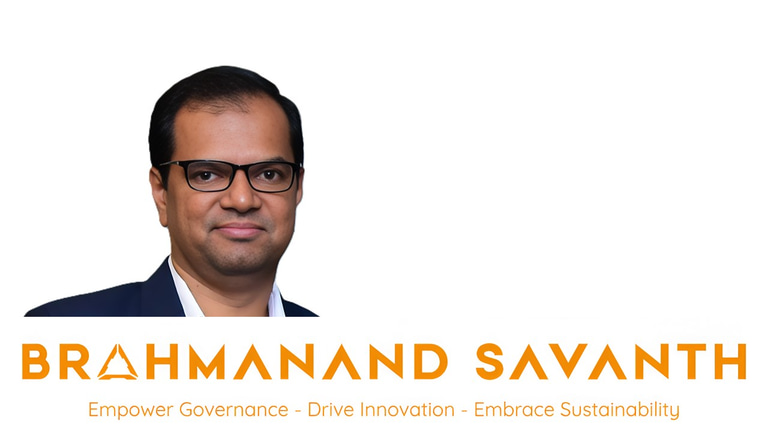Empowering Teams, Driving Strategy, and Bridging Gaps: Lessons from IT Services - Published on Medium.com
How do you build high-performing teams, deliver user-focused products, and align technical solutions with business goals in IT service industry? It’s a challenge that requires leadership, vision, and collaboration. Here’s a case study that showcases how these elements come together to create success
BLOG
Brahmanand Savanth
11/24/20243 min read


1. Guiding Teams for Growth
Behind every successful project is a team that collaborates and grows together. To build this environment, fostering open communication and continuous learning is essential.
A successful IT service initiative leads to a solid and high-performing team. Leading such a team goes beyond managing tasks; it requires adopting an environment where every member feels empowered to learn, grow, and contribute meaningfully.
Imagine a team of Product Owners and System engineers struggling to align their goals. Their leader recognized the potential of a collaborative culture and initiated regular knowledge-sharing sessions. In these sessions, team members exchanged insights on emerging trends, shared lessons from past projects, and brainstormed solutions to ongoing challenges.
A key strategy was introducing a mentorship program, where experienced team members coached junior members on problem-solving techniques, while juniors shared their fresh perspectives on innovative tools. This mutual exchange not only bridged skill gaps but also strengthened team dynamics.
The Impact:
Enhanced confidence in tackling complex tasks.
Improved team morale and productivity.
A culture of continuous learning that drives innovation.
When teams are guided with empathy and inspired to grow, they become more than the sum of their parts—they become engines of transformation
For example, reverse mentoring—where junior team members share their knowledge of emerging technologies with senior colleagues—was introduced to break silos. This not only enhanced team unity, but also empowered individuals to contribute innovative solutions, like reducing ticket resolution times by 15%.
Takeaway: When teams are supported and encouraged, they transform challenges into opportunities.
2. Driving Strategy and Delivering Results
A legacy system causing user frustration became the perfect example of aligning strategy with user needs. Instead of jumping into technical solutions, the focus was on understanding real pain points.
Strategy is the compass that directs IT service projects toward meaningful outcomes. It’s about defining a clear vision, setting priorities, and ensuring that every deliverable aligns with business objectives and user needs.
Consider the case of an organization dealing with a clumsy legacy application that frustrated both users and administrators. The leader began by conducting user interviews and workflow analyses to uncover pain points. Based on these insights, a roadmap was created, breaking the transformation into small, achievable milestones.
The team adopted an agile methodology, delivering incremental updates every sprint. The first milestone focused on streamlining login processes, followed by dashboard enhancements and performance optimization. By involving users at every stage, the team ensured the changes were practical and impactful.
Key Takeaways:
The user-centred approach ensures products address real needs.
Agile delivery allows for flexibility and continuous improvement.
A well-prioritized roadmap keeps teams focused and stakeholders aligned.
Ultimately, a clear and well-executed product strategy transforms user frustration into delight, building trust and loyalty.
An agile approach was adopted, breaking the project into manageable phases. Updates were rolled out incrementally, allowing user feedback to shape improvements. A faster login feature and a redesigned dashboard were just the beginning. These changes not only met technical goals but delighted users with a seamless experience.
Takeaway: A clear vision and iterative strategy ensure that products align with business goals and exceed user expectations.
3. Bridging the Gap Between Business and Technology
A cross-functional team was tasked with integrating a predictive analytics tool for a retail client. The stakeholders, primarily business leaders, struggled to articulate their needs in technical terms. The leader facilitated a series of collaborative workshops, using simple analogies to explain complex algorithms and clarify expectations.
For example, the predictive model was compared to assembling assumptions, where historical data served as the pieces and algorithms determined how they fit together. This approach demystified the technical process, allowing stakeholders to make informed decisions.
The Outcome:
A shared understanding of project goals across business and technical teams.
A predictive tool that exceeded expectations, boosting customer retention by 25%.
Strengthened relationships between stakeholders and the delivery team.
IT leaders ensure that technical solutions drive tangible business value by engaging stakeholders with clarity and empathy.
Effective stakeholder engagement is often an essential component of project success. In this case, business units wanted a predictive feature for customer behaviour but lacked technical clarity. By simplifying the complex and using analogies, technical teams could deliver a solution that boosted sales by 20%.
Takeaway: Bridging communication gaps with empathy and clarity ensures alignment between technical solutions and business objectives.
A Framework for Success
Leadership, strategy, and collaboration are the cornerstones of success in the IT service industry. Empowering teams, prioritizing user needs, and aligning stakeholders are not just steps in a process—they’re transformative practices.
Empowering Teams: By nurturing collaboration and growth, teams become self-sufficient and innovative.
Strategic Development: Iterative and user-focused approaches ensure the final solution aligns with organizational goals and user needs.
Stakeholder Alignment: Bridging gaps between technical and business teams results in functional and impactful solutions.
In the IT service industry, these principles serve as a framework for transforming complex challenges into seamless, efficient solutions. Leaders who guide teams, define clear strategies, and connect stakeholders to shared goals drive not just project success but organizational excellence.
